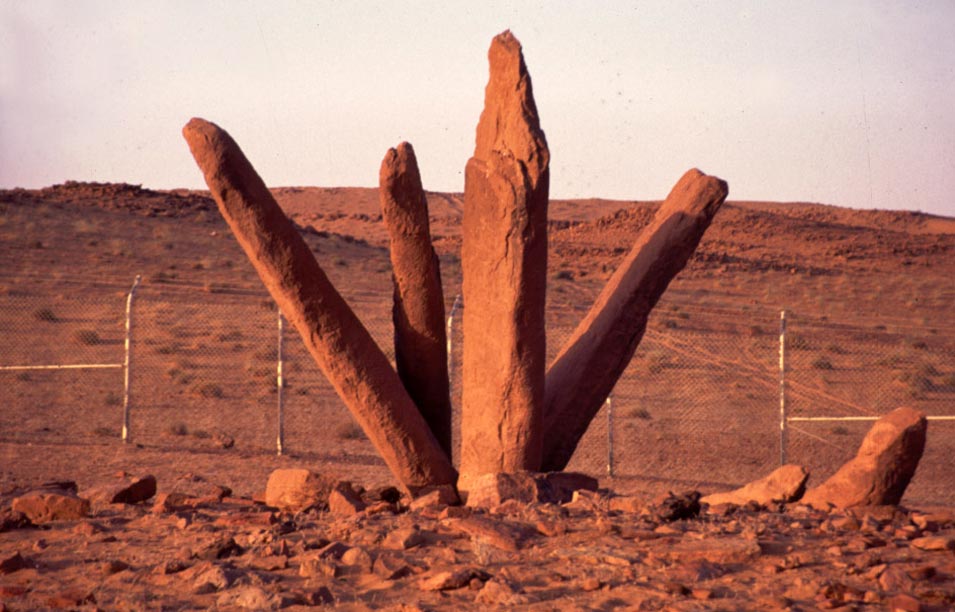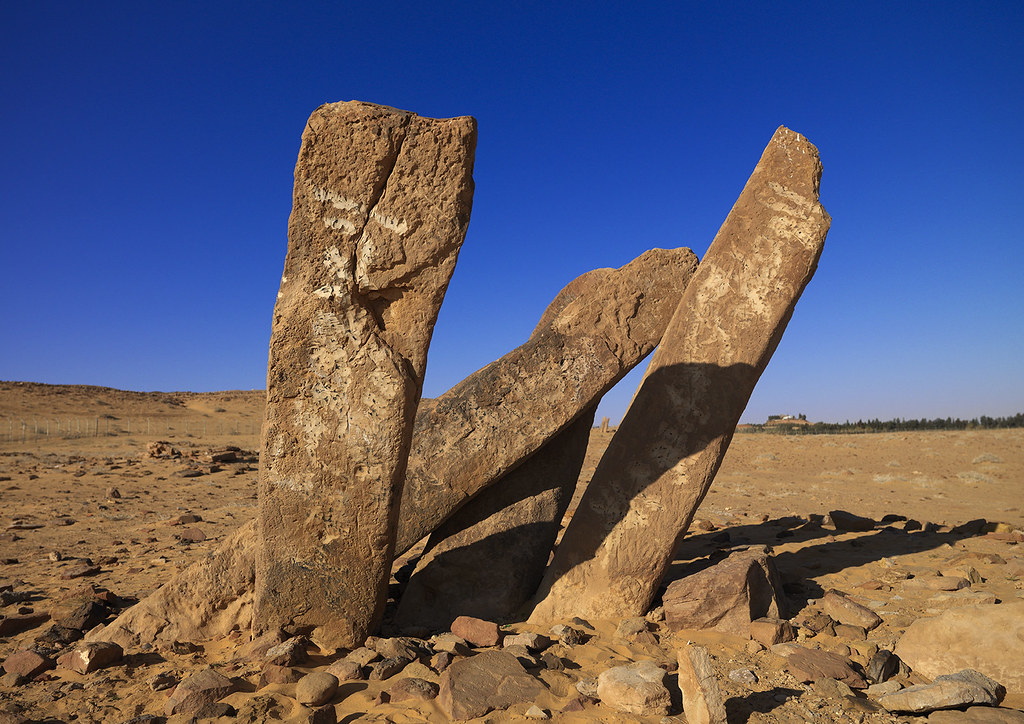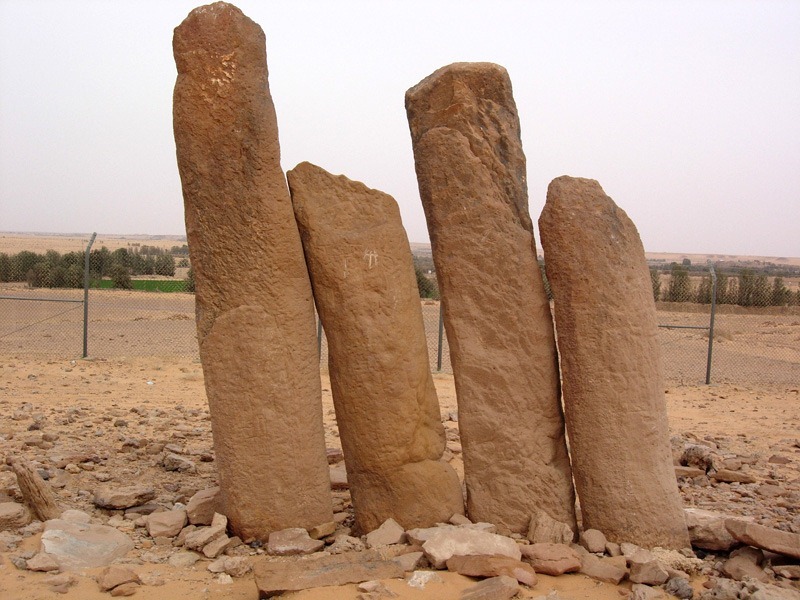Al Rajajil Standing Stones

The standing stones of Al-Rajajil represent an enigma that very few have heard of.
The Al-Rajajil standing stones sometimes referred to as the “Standing Men”, are a collection of fifty groups of man-made stone columns near the ancient oasis town of Sakakah in Al-Jawf province in northwestern Saudi Arabia.
The stones are arranged in groups of four or more, joined at the base and leaning outwards at random angles. Some of them appear to have fallen over.

Nicknamed the Stonehenge of Saudi Arabia, the Al-Rajajil stones are believed to have been erected more than 6,000 years ago.
Archaeologists do not know much about Al-Rajajil, such as who built it and what was its purpose.
The stones do not seem to have had any ceremonial purpose as no human remains or religious artifacts and offerings were discovered in the vicinity of the stone pillars.
However, the alignment of the stones seems to suggest an astronomical connection.
As it’s often the case, this is not immediately apparent from ground level, but aerial images suggest there might be alignments to the sunrise and the sunset.

Since Al-Jouf was a significant stopover point on several ancient trade highways that connected the Arabian Peninsula, Egypt, Mesopotamia, and Syria, some researchers speculated that the pillars might have been landmarks for a trade route.
One trade route, one of the oldest land routes in recorded history, ran from Yemen and parallel to the Red Sea coast through Madinah, Al-‘Ula, and Mada in Saleh.
It turned northeast to Al-Jouf and then north toward Damascus and Turkey.
By traveling north and northeast to Al-Jouf, then turning east as indicated by the pillars, the traveler avoided the harsh sands of the Great Nafud to the south and the less passable terrain of Wadi al-Sirhan (Sarhan) to the north.
The stones may have been an indicator of the presence of the cross-road, and the safer route to take.
However, its age suggests that the stones were already standing when such routes didn’t exist yet.
